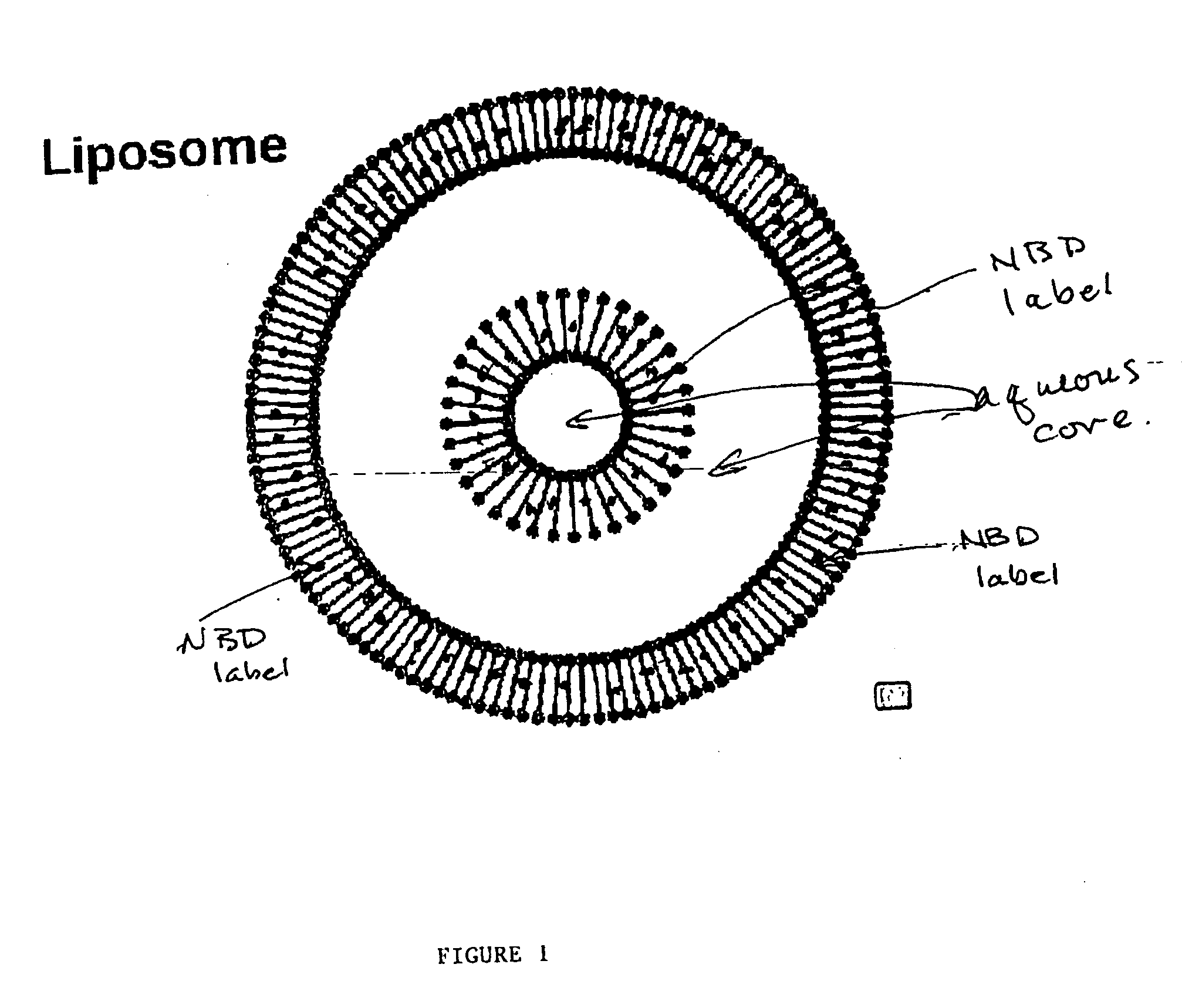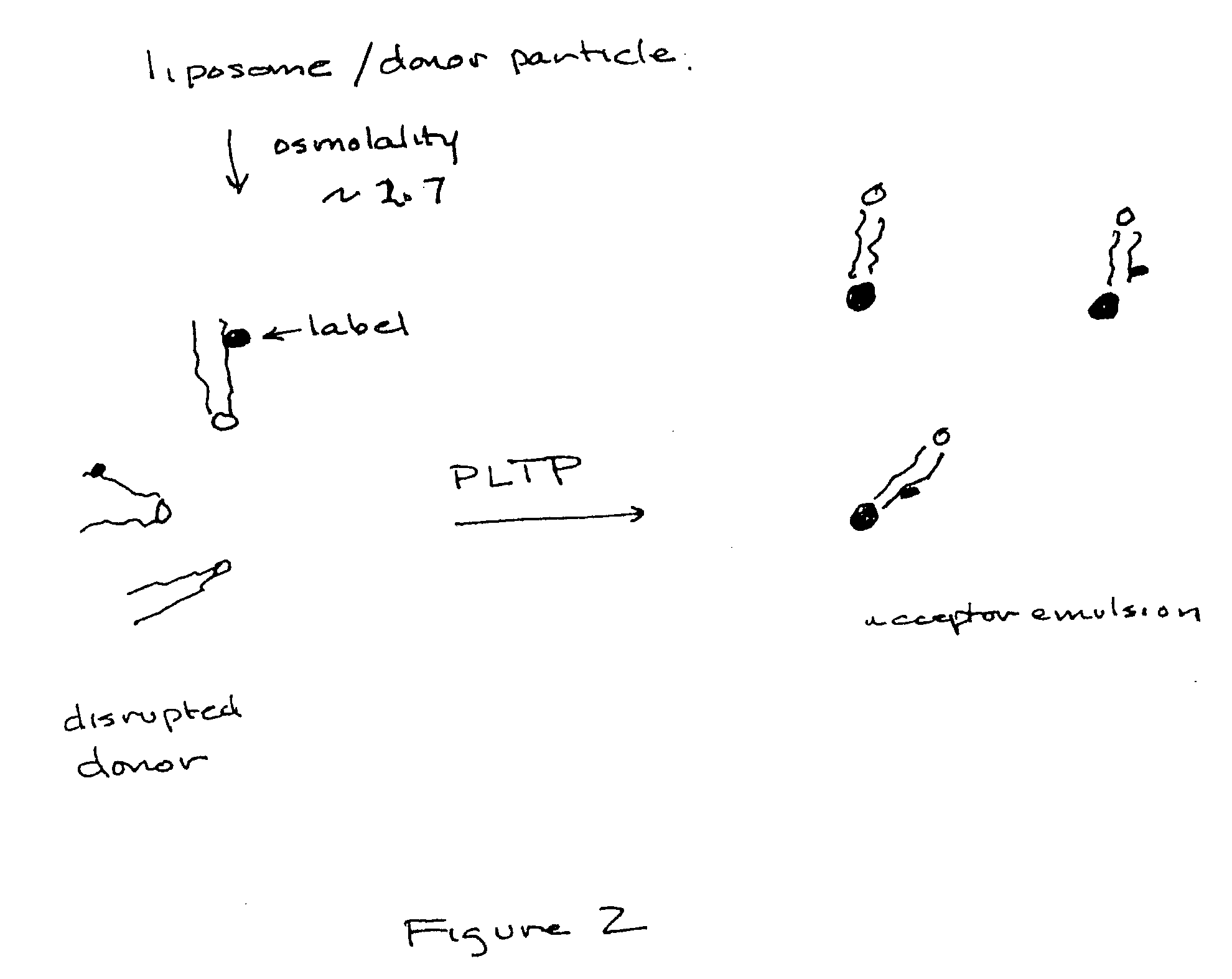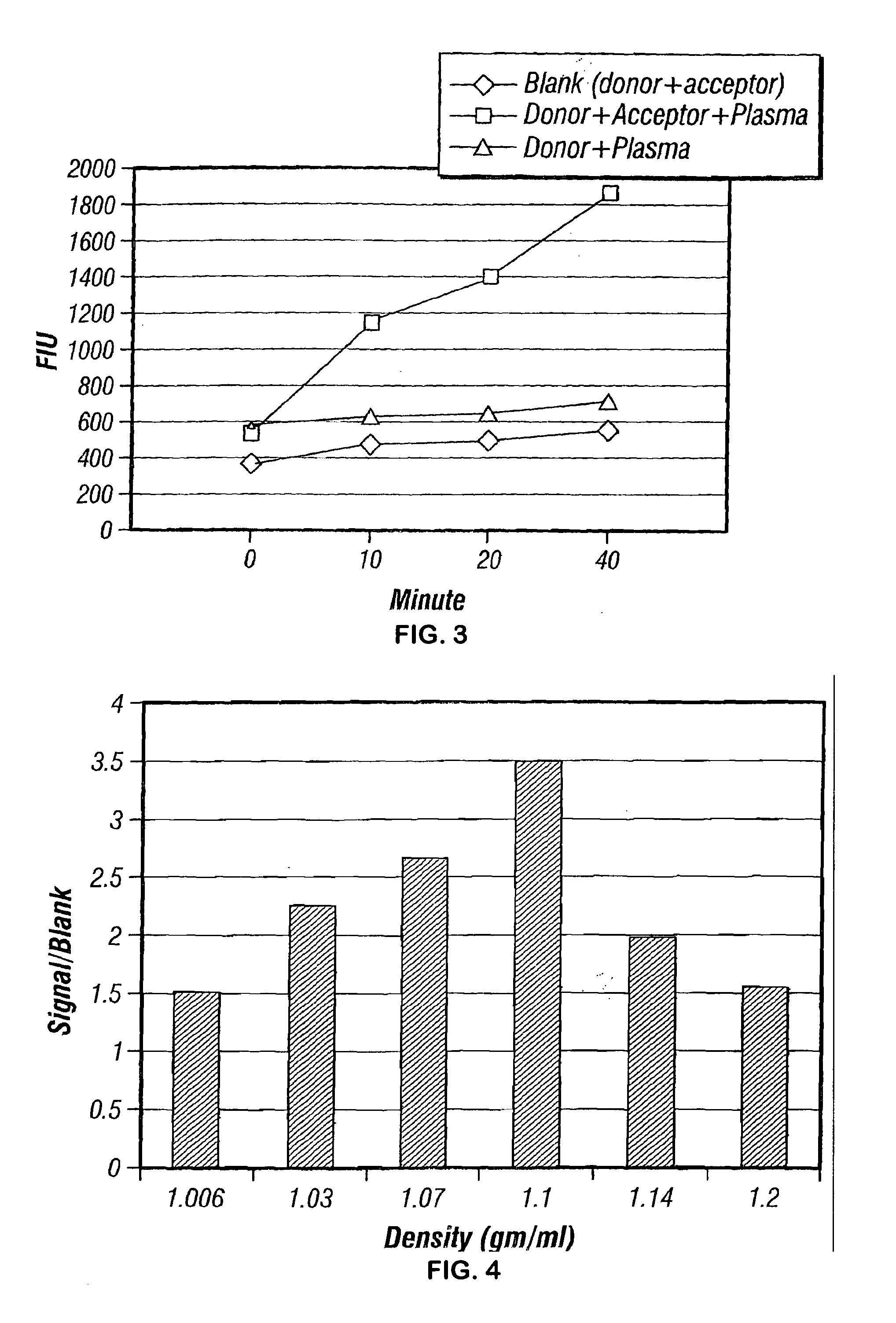Specificity and activity assay for phospholipid transfer proteins and method for identification and characterization of diseased states
a technology of phospholipid transfer protein and specificity and activity, which is applied in the field of specificity and activity assay of phospholipid transfer protein and the method for identification and characterization of diseased states, can solve the problems of handicapped pltp activity, achieve improved signal-to-noise ratio, improve the effect of signal-to-noise ratio, and reduce the number of manipulations
- Summary
- Abstract
- Description
- Claims
- Application Information
AI Technical Summary
Benefits of technology
Problems solved by technology
Method used
Image
Examples
example 1
Determination of PLTP in Standard Samples
[0060] The donor particles are comprised of unlabled phosphatidylcholine (PC) and labeled phospholipid substrates. One, two, three or more donor types may be employed in order to measure different substrate enzyme specificities.
[0061] For example, donor A may include, phosphatidylethanolamine (PE) coupled to NBD or NBD-PE; while donor B may include, 1-Oleoyl-2-[6-[(7-nitro-2-1,3-benzoxadiazol-4-yl)amino]hexanoyl]-sn-Glycero-3-[Phospho-rac-(1-glycerol)] (NBD-PG); and, donor C may include, 1-Palmitoyl-2-[6-[(7-nitro-2-1,3-benzoxadiazol-4-yl)amino]hexanoyl]-sn-Glycero-3-Phosphocholine (NBD-PC).
[0062] The molar ratio of NBD labeled substrate to the remainder of the unlabeled phospholipid, PC, must be >50% to permit sufficient self-quenching.
[0063] The three compositions of donor particles were prepared: [0064] Composition donor A: 10 mg NBD-PE+2.00 mg PC [0065] Composition donor B: 10 mg NBD-PC+2.45 mg PC [0066] Composition donor C: 10 mg NB...
PUM
| Property | Measurement | Unit |
|---|---|---|
| concentration | aaaaa | aaaaa |
| emission wavelength | aaaaa | aaaaa |
| excitation wavelength | aaaaa | aaaaa |
Abstract
Description
Claims
Application Information
 Login to View More
Login to View More - R&D
- Intellectual Property
- Life Sciences
- Materials
- Tech Scout
- Unparalleled Data Quality
- Higher Quality Content
- 60% Fewer Hallucinations
Browse by: Latest US Patents, China's latest patents, Technical Efficacy Thesaurus, Application Domain, Technology Topic, Popular Technical Reports.
© 2025 PatSnap. All rights reserved.Legal|Privacy policy|Modern Slavery Act Transparency Statement|Sitemap|About US| Contact US: help@patsnap.com



